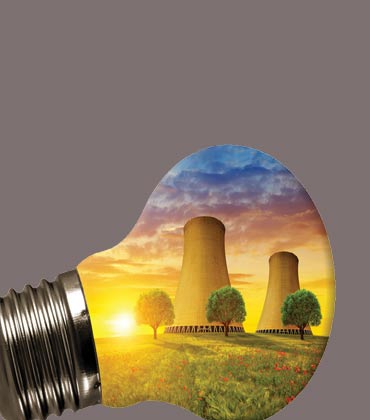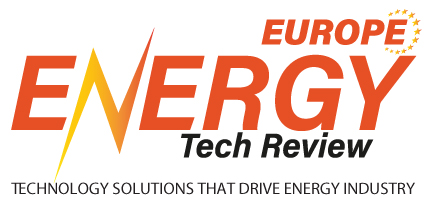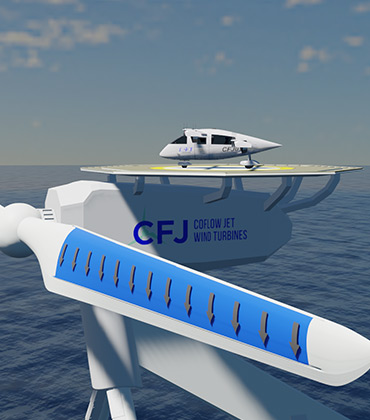Humans generate an incredible amount of waste - nearly 2 billion metric tons a year - and that number is expected to grow by 70 percent by 2050. To make matters worse, two-thirds of human-generated methane emissions come from waste. Methane is a potent greenhouse gas, with 25 times more warming potential than carbon dioxide. Dealing with our waste effectively is critical for the long-term survival of humanity. Fortunately, technologies exist to deal with this problem. Anaerobic digesters that convert organic waste into biogas and renewable fertilizer in a controlled manner have been proven for a long time. However, biogas has historically been flared at waste sites (converted to carbon dioxide without getting any productive use) or combusted in a combustion generator to produce electricity. While both methods do destroy methane, they cause significant local air pollution in the form of NOx, SOx, and particulate matter emissions. More recently, mainly through significant policy enablers in the US and Europe, larger biogas projects have been upgrading biogas to pipeline-quality natural gas (called Renewable Natural Gas or RNG) that is either injected into the gas distribution system or trucked to its end-use location. These projects displace fossil natural gas use and avoid local pollution at the waste source, a meaningful benefit. RNG has seen significant growth in recent years and should be a key part of the energy transition. However, RNG projects are capital-intensive and consume significant energy. Roughly 20 percent of the energy content in the biogas is used in cleaning and upgrading biogas to make RNG. This limits their deployment ability to very large projects, a relatively small fraction of the overall waste universe.
Top AI-Powered Innovation Management Platform 2025
Utilities sit at the center of some of the most urgent challenges of our time. From wildfire mitigation to grid modernization, their work is defined by regulatory filings that often exceed hundreds of pages. Buried in those details are the very problems utilities need to solve. They also face crowded trade shows packed with vendors, each offering different answers but little clarity. As a result, progress slows, pilots take years, and resources drain away while decisions remain unresolved. InnovationForce was created to change that reality. The company built an AI-powered platform that transforms how utilities innovate. It saves time by extracting challenges directly from regulatory documents and saves money by shortening pilot cycles, producing measurable financial impact. Vendor relationships become more efficient because solutions are matched to verified problems, leading to clear outcomes. AI-Powered Workflows That Deliver Measurable Impact The platform begins with the AI Challenge Builder agents, which read regulatory documents and generate challenge statements that include the problem definition, context, desired outcome, and risks of inaction. More than 6,000 statements have been created, presenting utilities with a structured digital catalog of their issues, far better than keeping problems buried in unwieldy reports that few have time to read. A second layer of intelligence matches these challenges with potential solutions. Over 3,000 solutions are currently in the database, producing more than 75,000 match combinations. A utility can identify which providers have relevant offerings, while vendors can see the exact problems their technologies address. This dual capability transforms scattered exploration into clear connections. “Utilities told us they were stuck, overwhelmed by where to start, drowning in ideas, and burned out from pilots that never scaled. Traditional options like consultants, accelerators, or venture studios were expensive, slow, and built for someone else’s industry. So, we built something different: a curated innovation ecosystem, purpose-built for energy and powered by AI. It’s like having your own private venture studio, one that understands your unique problems, instantly matches them to proven solutions, and guides your team all the way to execution, without the seven-figure price tag..
Wind Energy Generation Solution
The global community is on a relentless pursuit to achieve carbon neutrality, making the utilization of clean energy more pronounced than before. Wind, the most abundant source of sustainable energy, will play an indispensable role in attaining carbon neutrality goals by 2050. The economic viability of harnessing wind energy is crucial to its growth as a renewable resource. CoFlow Jet Wind Turbines is revolutionizing wind energy generation with its co-flow jet (CFJ) wind turbine technology, paving the way for a world with zero emissions. Its 2-bladed downwind turbine technology, enabled by CFJ active flow control, challenges traditional wind turbine technologies by generating more power at lower costs. “We aim to transform the wind turbine industry and greatly impact the global environment protection initiatives by reducing greenhouse gas emission and freshwater usage,” says Gecheng Zha, president and founder. Despite the significant advancements in wind turbine technology over the years, the fundamental principles governing their operation remain unchanged. While the sizes of wind turbines have increased, the aerodynamic capabilities have undergone minimal transformation, leaving huge opportunities for improvement. The CFJ technology aims to overcome these drawbacks. It boosts the efficiency of wind turbines by increasing the lift coefficient, expanding the stall angle of attack and reducing drag - all at relatively low costs. Its two-bladed downwind turbines can improve power output even at very low wind speeds. CoFlow’s primary objective is to optimize power generation and curtail the levelized cost of energy by 20 to 30 percent. Two-bladed wind turbines reduce manufacturing, transportation, installation and maintenance costs associated with the traditional three-blade turbines. The ability to modulate pitch and yaw movements alleviates the operational burden of the motors and reduces expenses. While the aerodynamically inefficient cylindrical shape of traditional wind turbines hinders the optimization of power output, CFJ technology enhances lift generation on the cylindrical sections and maximizes the usage of the entire swept area of the turbines. Also, unlike upwind turbines, which are prone to blade-tower strikes, the blades on CFJ’s downwind turbines are bent away from the tower. The relaxed structure of the equipment helps reduce blade mass and manufacturing costs. CFJ’s extensive stall operating range renders it nearly stall-free. It is adept at countering flow separation and enhancing operational efficiency. This feature is highly advantageous for wind farms as it can increase the power density of a wind farm by approximately 50 percent.
Renewable Energy Service
When working on renewable energy projects, Michael Noonan, president of Aspen Consulting Services, often draws on the values instilled during his upbringing on a Wyoming ranch. From a young age, Noonan learned the importance of respecting the land and understanding the perspectives of those who depend on it—principles that continue to shape his approach to energy project development today. These values are seamlessly integrated into Aspen’s front-end development services, which prioritize delivering projects to shovel-ready status. By focusing on three critical components—securing necessary land rights, engaging with local communities and navigating the complexities of permitting—Noonan and his team ensure that each project meets regulatory requirements and respects the land and its stewards. This thoughtful approach ensures projects move forward with a balance of technical precision and respect for both the environment and the communities involved, contrasting with the more traditional, urban-centered energy initiatives that often overlook the nuances of rural life. “Times have changed. Now, you can’t move forward without strong community support. For most of my clients, community engagement and clear messaging have become top priorities. We make it our mission to work hand in hand with leadership teams to craft clear, consistent messaging right from the start, ensuring it resonates with the community and the project’s overall goals,” says Noonan.
CXO INSIGHTS

What Role Does Your IT Department Play in SAAS Applications?
Jacque Keenan, Director of Information Technology Business Applications, SRP

Emerging Energy Industry: Perks And Pitfalls
Donell Banks, Senior Advisor - Southern Nuclear Services, Southern Nuclear

Driving Sustainable Energy Solutions For A Greener Future
Jason Colbenson, Senior Quality Assurance Specialist, Dairyland Power Cooperative

Navigating the Tides of Change in the Natural Gas Industry
Mark Reese, Vice President, U.S. Natural Gas Supply, Just Energy

Identifying the Value in Automating the Drill Floor
Jeremy Angelle, VP of Well Construction, Expro

Prioritization-the Key to Effective Vulnerability Management
Genady Vishnevetsky, Chief Information Security Officer, Stewart Title

Strategic Initiatives for a Cleaner Energy Future
Ivon Louis-Letang, Energy Manager, Eversource Energy
IN FOCUS
AI Platforms as Connective Tissue: Enabling Cross-Sector Collaboration in Energy Innovation
AI is revolutionizing the global energy landscape by integrating sectors, enhancing efficiency, and fostering a sustainable, interconnected system, exemplified by smart cities and advanced manufacturing.
AI-Powered Innovation Management: Accelerating Breakthroughs in Grid Modernization and Clean Energy
The global energy transition requires modernized grids and the integration of clean energy, with AI enhancing efficiency, optimizing renewable energy projects, and enabling smart grid operations for a sustainable future.
EDITORIAL
Engineering the Future of Intelligent Innovation
The global business landscape is evolving at an extraordinary pace, driven by the need for smarter and more sustainable ways to create value. As industries accelerate digital transformation, artificial intelligence is becoming the foundation of modern innovation. AI-powered innovation management platforms are helping organizations capture ideas, evaluate opportunities, and turn concepts into measurable outcomes with greater precision and speed. AI-powered innovation management platforms are transforming how enterprises manage and develop ideas. By integrating data intelligence with human creativity, these systems create a unified process for innovation, guiding concepts from early development through to implementation and performance evaluation. Automated workflows and predictive analytics enable teams to shorten development cycles and deliver meaningful outcomes. Across industries, AI-driven ecosystems are improving research and development and strengthening resource planning. Machine learning models analyze past project data and industry trends to predict success potential, while natural language processing connects related ideas across teams and geographies. This edition of Energy Tech Review explores how the convergence of AI and data analytics is redefining competitiveness and operational agility across industries. It features thought leadership articles from industry experts including Robert Gomez, Head of Onshore Asset Management at Ørsted, and Pamela Sporborg, director of transmission and market strategy at Portland General Electric. They share insights on how intelligent innovation ecosystems are enabling organizations to transform ideas into tangible results while fostering resilience and creativity. We hope this edition inspires forward-thinking perspectives on how AI-powered innovation platforms are empowering enterprises to stay agile and future-ready.











